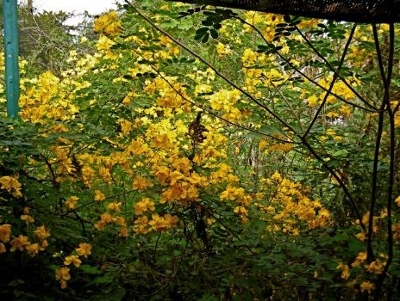 Lots of people recycle, eat local, cut waste, and do many other things to reduce their overall impact on the environment. But when they garden they routinely miss a lot of chances to be both more energy efficient and productive.
Lots of people recycle, eat local, cut waste, and do many other things to reduce their overall impact on the environment. But when they garden they routinely miss a lot of chances to be both more energy efficient and productive.
Permaculture began in Australia four decades ago and has since spread around the world because of its low-cost, nature-inspired approach to designing energy efficient civilizations. In these designs, nature, food production, housing and communities work in harmony mutually benefitting each other.
There are many ways permacultural design can make gardens more energy efficient. PC Designers aim to locate landscape elements such as trees, vegetables, beds, structures and walks where they will minimize labor but benefit adjacent elements. Designers also try to select both edge patterns and materials that passively encourage and retain all useful "free energies" (like water, sunlight, organic matter, and insect eating birds). And they passively block, discourage or expel unwanted "free energies" (such as pest weeds and insects, damaging winds, and noise). PC Designers try to stack elements by, for example, getting regular value from two or more plants occupying the same spot in the yard. This is done by having a sun-loving plant such as a grape above a shade-loving plant such as sweet potatoes or spinach, or by having an early-leafing early-fruiting plant such as a blackberry grow under a late-leafing, late-fruiting plant such as a grape.
All of these techniques work because they are passive. Once they are built into the landscape, they continue to work year after year without requiring money, materials, or time. They also work because they get many uses out of the same element. If you want to learn more about how to do incorporate these habits into your life, check out Urban Harvest/Certificate courses/Permaculture.
Although the approximately 100 hours of permaculture classes is an eye-opener, it doesn't take classes to start using the ideas. Try to get multiple uses out of any material or effort you put energy into. Permaculturists think that when we plan an activity or a design, we should consciously think out how they could get the most uses out of the effort. Whether it be a small expenditure such as a trip to the store, or a big effort like adding a room to the house, starting a committee, or building a light rail line for a city, achieving multiple purposes should be our first thought.
Most of the many plants and other elements in my garden give me multiple uses. My heirloom roses don't just add beauty and fragrance to the walk beside the driveway. Their thorns also discretely keep unwanted grapefruit thieves away from our trees. The thorns on the coral bean hedge by the front walk have the same function, but coral bean also provides pollen for bees, nectar for hummingbirds, adds nitrogen to the soil, and is beautiful as well.
We also have three rainwater cisterns that help reduce the irrigation bill, provide non-chlorinated water to the plants, decrease flooding in the streets and near our house, help shield house walls from heat and hurricanes, and by holding heat in the winter, provide a microclimate for keeping tender plants frost-free.
Our Golden Wonder Senna not only provides a tree full of yellow flowers on Thanksgiving, but also provides forage for bees, larvae food for a host of delightfully orange and yellow sulfur butterflies and nitrogen addition to the soil. We also use the Senna's mass of foliage to funnel summer breezes across our patio.
In short, lots of observation and thought, as well as permaculture training before putting something in the landscape, can result in efficient designs that will reduce regular work and expense in future years, while improving the garden's quality.
This article is provided by Urban Harvest, Inc. To learn about gardening classes, farmers markets, school and community gardens and more go to www.urbanharvest.org or call 713-880-5540 for more information. This article was written by Bob Randall, Ph.D. who is the retired co-founder of Urban Harvest and author of Year Round Vegetables, Fruits and Flowers for Metro-Houston. Contact him at yearroundgardening.me and BobInTheGarden@urbanharvest.org.